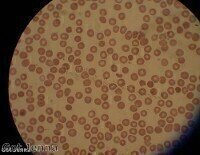-
 Mass spectrometry used to find potential new anti-malaria treatment
Mass spectrometry used to find potential new anti-malaria treatment
GC, MDGC
Mass spectrometry: Anti-malarial properties proven in new compound
May 03 2011
Originating in Brazil, the substance was tested by scientists hoping to find more solutions for malaria treatments and the results were published in the Malaria Journal.
Increasing drug resistance means that current solutions are rendered less effective, the researchers note, adding that traditional remedies are therefore being looked to for alternative therapies.
The stem bark was purified into seven fractions using a number of solvents.
Mass spectrometry, among other methods, was then employed to assess the effectiveness of each fraction in vitro and in vivo.
Against 3D7 and S20 strains of the disease, two of the fractions - 100 per cent ethanolic (F4) and 50 per cent methanolic - were found to possess anti-malarial qualities.
"Mass spectrometry analyses suggest that a new compound, most likely an isomer of quercetin, is responsible for the anti-malarial activity of the F4," the ten-strong team concludes.
An open-access online publication, Malaria Journal releases articles following peer review.
Digital Edition
Chromatography Today - Buyers' Guide 2022
October 2023
In This Edition Modern & Practical Applications - Accelerating ADC Development with Mass Spectrometry - Implementing High-Resolution Ion Mobility into Peptide Mapping Workflows Chromatogr...
View all digital editions
Events
May 05 2024 Seville, Spain
May 15 2024 Birmingham, UK
May 19 2024 Brno, Czech Republic
May 21 2024 Lagos, Nigeria
May 23 2024 Beijing, China













